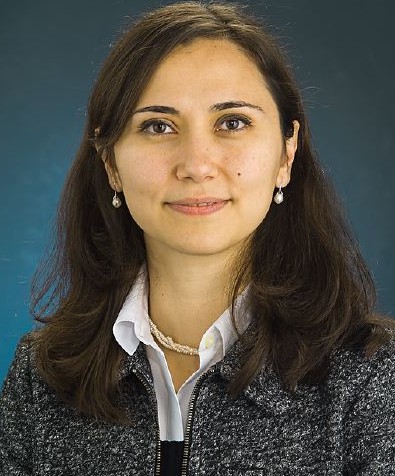Kinga Wrobel
Melissa Wang
Ozan Berk Imir
Yiru Chen
Francis Lee
Transcriptomic analysis identifies gene networks regulated by estrogen receptor α (ERα) and ERβ that control distinct effects of different botanical estrogens. Gong P, Madak-Erdogan Z, Li J1, Cheng J1, Greenlief CM1, Helferich WG, Katzenellenbogen JA, Katzenellenbogen B. Nucl Recept Signal. 2014 Sep 12;12S
The estrogen receptors (ERs) ERα and ERβ mediate the actions of endogenous estrogens as well as those of botanical estrogens (BEs) present in plants. BEs are ingested in the diet and also widely consumed by postmenopausal women as dietary supplements, often as a substitute for the loss of endogenous estrogens at menopause. However, their activities and efficacies, and similarities and differences in gene expression programs with respect to endogenous estrogens such as estradiol (E2) are not fully understood. Because gene expression patterns underlie and control the broad physiological effects of estrogens, we have investigated and compared the gene networks that are regulated by different BEs and by E2. Our aim was to determine if the soy and licorice BEs control similar or different gene expression programs and to compare their gene regulations with that of E2. Gene expression was examined by RNA-Seq in human breast cancer (MCF7) cells treated with control vehicle, BE or E2. These cells contained three different complements of ERs, ERα only, ERα+ERβ, or ERβ only, reflecting the different ratios of these two receptors in different human breast cancers and in different estrogen target cells. Using principal component, hierarchical clustering, and gene ontology and interactome analyses, we found that BEs regulated many of the same genes as did E2. The genes regulated by each BE, however, were somewhat different from one another, with some genes being regulated uniquely by each compound. The overlap with E2 in regulated genes was greatest for the soy isoflavones genistein and S-equol, while the greatest difference from E2 in gene expression pattern was observed for the licorice root BE liquiritigenin. The gene expression pattern of each ligand depended greatly on the cell background of ERs present. Despite similarities in gene expression pattern with E2, the BEs were generally less stimulatory of genes promoting proliferation and were more pro-apoptotic in their gene regulations than E2. The distinctive patterns of gene regulation by the individual BEs and E2 may underlie differences in the activities of these soy and licorice-derived BEs in estrogen target cells containing different levels of the two ERs. PMID:25363786
The forkhead transcription factor FOXM1 promotes endocrine resistance and invasiveness in estrogen receptor-positive breast cancer by expansion of stem-like cancer cells.Bergamaschi, A., Madak-Erdogan, Z., Kim Y., Choi Y.L., Lu H. and Katzenellenbogen, B.S. , Breast Cancer Res. 2014 Sep 12;16(5):436.
The forkhead transcription factor FOXM1 coordinates expression of cell cycle-related genes and plays a pivotal role in tumorigenesis and cancer progression. We previously showed that FOXM1 acts downstream of 14-3-3¿ signaling, the elevation of which correlates with a more aggressive tumor phenotype. However, the role that FOXM1 might play in engendering resistance to endocrine treatments in estrogen receptor-positive (ER+) patients when tumor FOXM1 is high, has not been clearly defined.MethodsWe analyzed FOXM1 protein expression by immunohistochemistry (IHC) in 501 ER-positive breast cancers. We also mapped genome-wide FOXM1, extracellular-regulated kinase 2 (ERK2) and ER¿ binding events by chromatin immunoprecipitation followed by high-throughput sequencing (ChIP-seq), in hormone-sensitive and resistant breast cancer cells after tamoxifen treatment. These binding profiles were integrated with gene expression data from cells before and after FOXM1 knockdown to highlight specific FOXM1 transcriptional networks. We also modulated the levels of FOXM1 and newly discovered FOXM1-regulated genes and examined their impact on the cancer stem-like cell population, and on cell invasiveness and resistance to endocrine treatments.ResultsFOXM1 protein expression was high in 20% of the tumors, and this correlated with a significantly reduced survival in these patients (P¿=¿0.003, log rank Mantel-Cox). ChIP-seq analyses revealed that FOXM1 binding sites were enriched at the transcription start site of genes involved in cell cycle progression, maintenance of stem cell properties, and invasion and metastasis, which are all associated with a poor prognosis in ER¿-positive patients treated with tamoxifen. Integration of binding profiles with gene expression highlighted FOXM1 transcriptional networks controlling cell proliferation, stem cell properties, invasion and metastasis. Increased expression of FOXM1 was associated with an expansion of the cancer stem-like cell population and with increased cell invasiveness and resistance to endocrine treatments. Use of a selective FOXM1 inhibitor proved very effective in restoring endocrine therapy sensitivity and decreasing breast cancer aggressiveness.ConclusionsCollectively, our findings uncover novel roles for FOXM1 and FOXM1-regulated genes in promoting cancer stem-like cell properties and therapy resistance, and highlight the relevance of FOXM1 as a therapeutic target to be considered for reducing invasiveness and enhancing breast cancer response to endocrine treatments. PMID:25213081
Zeynep Madak-Erdogan, Director
 Dr. Madak-Erdogan is the Director of Women’s Health, Hormones and Nutrition lab. She received her B.S. degree in Molecular Biology and Genetics from Bilkent University in 2002. After completing her PhD and Postdoctoral studies on Mechanisms of Estrogen Receptor Action, she joined Department of Food Science and Human Nutrition at UIUC, in 2014. Her lab uses “Systems Biology” approaches to understand how nutrients and hormones impact Women’s health, in normal as well as diseased states like breast cancer, metabolic syndrome and cardiovascular disease.
Dr. Madak-Erdogan is the Director of Women’s Health, Hormones and Nutrition lab. She received her B.S. degree in Molecular Biology and Genetics from Bilkent University in 2002. After completing her PhD and Postdoctoral studies on Mechanisms of Estrogen Receptor Action, she joined Department of Food Science and Human Nutrition at UIUC, in 2014. Her lab uses “Systems Biology” approaches to understand how nutrients and hormones impact Women’s health, in normal as well as diseased states like breast cancer, metabolic syndrome and cardiovascular disease.
Novel Roles for ERK5 and Cofilin as Critical Mediators Linking ERalpha-Driven Transcription, Actin Reorganization and Invasiveness in Breast Cancer.Madak-Erdogan Z., Ventrella R, Petry L., Katzenellenbogen BS , Molecular Cancer Research, 2014 May;12(5):714-27,
Cancer cell motility and invasiveness are fundamental characteristics of the malignant phenotype and are regulated through diverse signaling networks involving kinases and transcription factors. This study establishes an estrogen receptor (ERα)/MAPK (ERK5)/cofilin (CFL1) network that specifies the degree of breast cancer cell aggressiveness through coupling of actin reorganization and hormone receptor–mediated transcription. Using dominant negative and constitutively active forms, as well as small-molecule inhibitors of extracellular signal–regulated kinase (ERK)5 and MAP–ERK kinase (MEK)5, it was revealed that hormone activation of ERα determined the subcellular localization of ERK5, which functions as a coregulator of ERα-dependent gene transcription. Notably, ERK5 acted in concert with the actin remodeling protein, CFL1, and upon hormone exposure, both localized to active nuclear transcriptional hubs as verified by immunofluorescence and proximity ligation assays. Both ERK5 and CFL1 facilitated PAF1 recruitment to the RNA Pol II complex and both were required for regulation of gene transcription. In contrast, in cells lacking ERα, ERK5 and CFL1 localized to cytoplasmic membrane regions of high actin remodeling, promoting cell motility and invasion, thereby revealing a mechanism likely contributing to the generally poorer prognosis of patients with ERα-negative breast cancer. Thus, this study uncovers the dynamic interplay of nuclear receptor–mediated transcription and actin reorganization in phenotypes of breast cancer aggressiveness.PMID: 24505128






